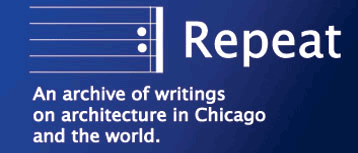

  |
||||
|
|
The World's Tallest Buildings - America's latest Outsourcing -by Lynn Becker What's behind the United States falling behind in the race for height, and could it have anything to do with the sapping of our precious bodily fluids? |
-
|
||
|
As American's weath flows to China, India and the Middle East via enormous trade deficits that leave ever increasing amounts of U.S. investment and debt in foreign hands, can the ebbing of American power and prestige be far behind? For better or worse, in this monetarized, post industrial age, the skyscraper has replaced the factory as the more The Chicago-based Council on Tall Buildings and Urban Habitat, in connection with the Emporis website, has just released its survey of the ten tallest buildings brought on-line in 2005, and exactly one of them, Cesar Pelli and Associates' Bloomberg Tower in Manhattan, is in the United States. No less than five were in China, two in Australia, one in Moscow and one in Dubai, incongruously named Chelsea Tower. Judging from the photos that accompany the announcement, the most adventurous part of most of these buildings is not their appearance, but their engineering. Bland towers predominate, although there's more than a bit of local character in the Stalinist era retro look of Moscow's Triumph Palace, and the pagoda-like crests of the "Skyscraper construction has always been motivated by one of two factors: a logical response to central business district land prices, or plain egomania," wrote Aaron Betsky in Babylon Revisited, an article on the past and future of skyscrapers in the December 2002 issue of Architecture Magazine. Betsky quotes SOM Kapellmeister David Childs who argues that "Above sixty-five to seventy stories, you lose the logic. The size of the core in relation to the floor plate, the amount of bracing you need to overcome the overturning loads, and all the other investments stop making sense above that." All of which has not stopped Childs from crushing Daniel Libeskind like a bug in a scorpion's battle over who will design the increasingly speculative 1,776 foot-high Freedom Tower at the World Trade Center site. And speaking of the speculative, this week, the Chicago Department of Planning and It's not the architecture critics, but Hollywood that may have a truer tap into the more reptilian motivations of our deepest ids. It's always had its thumb on the the narrative potential of the repressed sensual back stories of our dreams, especially those involving obsessions with tall buildings, going all the way back to the hyperventilating 1949 film of The Fountainhead, which film critic Dave Kehr praised for the way director King Vidor transcended Ayn Rand's didactic novel "mainly by pushing the phallic imagery so hard that it surpasses Rand's rightist diatribes and even camp ('I wish I'd never seen your skyscraper!)" Cut to today, where another skyscraper becomes a
Join a discussion on this story. © Copyright 2005 Lynn Becker All rights reserved.
|
||||